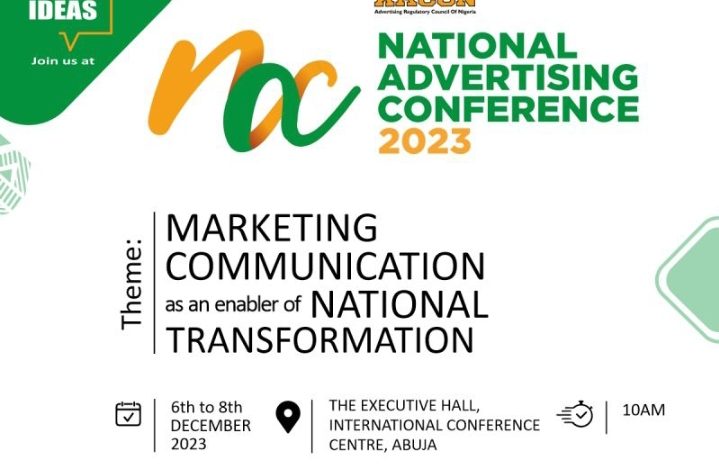Leading media agency network Zenith Media, has predicted that advertising expenditure by automotive brands will grow by 0.8% in 2019, down from 1.5% in 2018. The report was contained in Zenith’s inaugural Automotive Advertising Expenditure Forecasts, published recently.
Auto brands are expecting a tough year in 2019 as they face continued tension in trading relations, particularly between the US and China, and the possible imposition of car import tariffs in the US making it more expensive for manufacturers to source raw materials and parts, as well as to sell across borders. Zenith then forecasts 2.0% growth in 2020, when the Summer Olympics in Tokyo and the UEFA Euro 2020 football championships will provide valuable showcases for auto advertising.
This partly explains why major automakers are scrambling to get a bigger foothold on the African market, including Nigeria.
Nigeria’s auto market remains the largest in Africa, and the buying power of her middle class is increasing exponentially thus, presenting a huge opportunity in terms of consumption of auto products. This is despite infrastructure challenges, the President/CEO Sub Saharan African Region, Ford Motor Company, Jeff Nemeth has said. The company plans to launch at least 30 new vehicles by 2020 in Middle East & Africa with the ambition to corner 50 per cent of the Nigeria auto market.
Nigeria’s annual new car market currently stands at over 50,000 but with projected growth, it can rise to as much 7.6 million in 2050.
Also ss part of its commitment to Africa and its 2022 midterm plan, Toyota is growing its presence on the continent, expanding industrial operations into new markets country by country. First in South Africa, Nigeria, Egypt, then Kenya and Ghana in 2018, and now Algeria. With the new plant in Algeria, Nissan’s total potential capacity in Africa will increase to about 200,000 vehicles.
So while the auto adspend in Europe, Asia and America slows down, analysts expect a rise in adspend in Nigeria and other African markets because of the spike in competititon.
Meanwhile, the global auto advertising is underperforming the ad market as a whole, which is growing at 4% a year. New technology and evolving consumer needs pose a fundamental challenge to the way the auto industry does business.
Embracing green fuels, new connected technology and new models of ownership, as well as using new digital channels to reach active buyers online, will be key to unlocking faster brand growth over the next few years.
This new research has revealed how differently auto advertising is behaving to the ad market as a whole, as brands tackle unique challenges to their traditional communication strategies,”
We have conducted our first exclusive survey of automotive advertising in 14 key markets across the world*, building on our authoritative Advertising Expenditure Forecasts, which we have been publishing for 31 years. We calculate that automotive advertising expenditure totalled US$35.5bn across these markets in 2018.
The USA is by far the biggest auto market in this report, with US$18.0bn in auto adspend in 2018, nearly three times more China, the next-biggest market, with US$6.3bn. US adspend by auto brands has been in long-term decline since 2012, however, with a 12% decline in adspend between 2012 and 2018. Meanwhile auto adspend in China grew 47% over this period. The fastest-growing market is India, where we expect auto adspend to grow at an average of 12.8% a year to 2020.
Television dominates auto advertising, but internet ads are growing fast
More than 50% of all automotive advertising expenditure goes to television – 54.9% in 2018, well above the 32.9% global average across all categories. Television remains the best channel for conveying emotional brand images and sustaining them over time. However, the ongoing decline in linear television ratings in most developed markets has been pushing up the prices of the remaining audiences. That’s now pushing brands to divert more of their spend to online video and other internet formats. We expect television’s share of automotive adspend to fall from 54.9% in 2018 to 54.4% in 2019, and then to 53.1% in 2020.
Auto brands have been steadily shifting more of their budgets to internet advertising, which includes advertising on all the online video services that deliver television-like content over the internet. Auto brands are some way behind the market as a whole in embracing internet advertising, though, spending 20.9% of their budget online in 2018, compared to the global average of 40.6%. The fact that vehicle sales are almost exclusively finalised offline makes it more difficult for auto brands to optimise their online activity for sales than for brands in most other categories. Consumers now conduct much of their research and consideration of auto brands online, however, so it’s important for auto brands to maintain a strong online presence so they can reach consumers at this key phase in the path to purchase. We forecast the internet’s share of automotive adspend to rise to 24.4% by 2020.
Apart from print, which continues to suffer from the ongoing decline in circulation figures, the rest of the traditional media are holding on to automotive advertising pretty well. We expect radio, cinema and out-of-home to either maintain or fractionally increase their share of automotive advertising between 2018 and 2020. Radio – which many consumers experience in their car – works particularly well for automotive brands, attracting 7.2% of auto adspend, compared to 6.0% of adspend across all categories globally.
Auto brands face unique communications challenges
Automotive brands face the same pressure for change that are driving all industries to transform the way they communicate with consumers and deploy their paid advertising. But they also face unique challenges as well. The rapid growth in consumer demand for SUV models has led to much higher competition among suppliers. This means advertisers need to target their advertising at potential SUV buyers more effectively, and assess the return on investment of their advertising more rigorously, both by channel and by model. Meanwhile, government intervention and consumer demand is forcing brands to invest in green technology, and to communicate their innovative values to consumers who are demanding change. Using data cues, such as interest in environmental and green issues and early tech adoption, can inform more effective targeting of potential green buyers.
New models of ownership are challenging auto brands to prove their relevance to younger consumers who may be putting off permanent car ownership for years. Partnering with events or activities that young consumers are passionate about, and with flexible ownership services, will help brands build relationships that will pay off when these consumers decide to make the leap to full ownership.
While we don’t expect fully autonomous cars to be widely available anytime soon, consumers are embracing semi-autonomous features and connected in-car technology. To attract tech-savvy drivers, brands should emphasise their semi-autonomous technology in their communications, and form partnerships with tech companies that can making driving safer, easier and more pleasant.
“This new research has revealed how differently auto advertising is behaving to the ad market as a whole, as brands tackle unique challenges to their traditional communication strategies,” said Jonathan Barnard, Zenith’s Head of Forecasting and Director of Global Intelligence. “Auto advertising is currently lagging behind the market, and has been slower to embrace online advertising, though the share of auto budgets to devoted online advertising is now rising rapidly.”
“’Mass advertising is central to maintaining brand consideration,” said Ben Lukawski, Zenith’s Global Head of Strategy. “But more personalised messages, targeted using behavioural cues, can reach consumers when they are actively considering an auto purchase and are most open to persuasion, guiding them down the path to purchase.”
*This research covers Australia, Brazil, Canada, China, France, Germany, India, Italy, Russia, South Korea, Spain, Switzerland, the UK, and the USA. Between them these markets account for 74% of all car sales by volume and 76% of global adspend across all categories, so advertising trends in these markets are representative of trends worldwide.






Comment
No comments found.